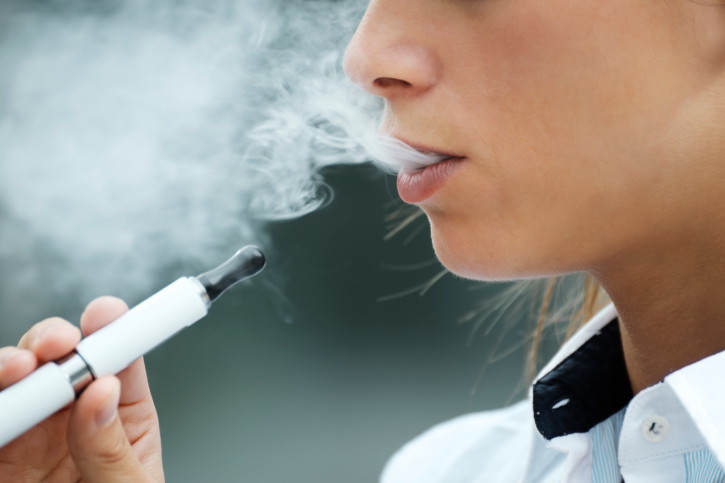Right off the bat, most people will tell you “smoking cigarettes is bad.” But when talking about e-cigarettes, it seems fewer people are inclined to say the same about vaping.
E-cigarettes are battery-powered vaporizers. The device heats a liquid, turning it into a vapor users inhale. While e-cigarettes don’t contain tobacco, the liquid does contain nicotine, which is known to have a number of harmful effects. Nicotine increases cardiovascular, respiratory and gastrointestinal disorders. It suppresses immune response. And it’s been shown to cause gene mutations that can lead to cancer.
E-cigarettes also contain dozens of other chemicals and flavorings that have questionable health effects on the body.
Some contend that e-cigarettes are a substitute for tobacco and can help adult smokers quit. This may be true. On the other hand, e-cigarettes also can be a gateway drug to cigarettes. So it is important to turn our attention toward a different segment of the population: teens and young adults.
The number of teens and young adults using e-cigarettes has tripled in recent years. Research defines use as partaking on at least one day in a month’s span. For high school students, this percentage increased from 4.5 percent in 2013 to 13.4 percent in 2014 and for middle school students, the rate went from 1.1 percent in 2013 to 3.9 percent in 2014. As stated in the 2014 National Youth Tobacco Survey, e-cigarette use surpassed that of regular cigarettes.
Why? Many fingers point to where and how makers of e-cigarettes advertise their products. Authors of one study found e-cigarette marketing is prevalent in places teens frequent, such as shopping malls and movie theaters. These advertisements come in the form of slick magazine ads, sponsorship of concerts and auto races, celebrity endorsements, and sweet colorful flavors to lure young buyers. And, though federal authorities banned TV commercials for cigarettes in 1971, companies can still advertise e-cigarettes on television.
The statistics mentioned above indicate that marketing of e-cigarettes has been successful. This is worrisome, because the full consequences of e-cigarettes use are not well known. However, this is what we do know: Tobacco Free CA notes that e-cigarettes contain at least 10 chemicals on California’s Prop 65 list of substances known to cause cancer, birth defects or other reproductive harm.
According to the 2014 Surgeon General’s report, “all kinds of nicotine use are unsafe for teenagers because it affects brain development.” Furthermore, the director of the Centers for Disease Control and Prevention, Dr. Tom Frieden, says “adolescence is a critical time for brain development. Nicotine exposure at a young age may cause lasting harm to brain development, promote addiction and lead to sustained tobacco use.”
Moreover, access to e-cigarettes is largely unregulated. The federal Food and Drug Administration (FDA) is the agency that regulates cigarettes. So far, the FDA has not formally issued regulations controlling access to e-cigarettes.
Even when FDA regulations do go into effect, “they won’t have the authority to prohibit the use of these products in public places or school grounds…school districts will still need to take that step,” notes Cathy Callaway, associate director of state and local campaigns for the American Cancer Society’s Cancer Action Network.
What can we do to turn these alarming statistics around? While there are roadblocks to passing widespread e-cigarette regulations, schools and school districts can implement campus rules. Some have already. The Daviess County School District in Kentucky added an amendment to ban e-cigarettes as part of its tobacco policy. Students in the Kyle Area Youth Advisory Council in Texas passed a citywide e-cigarette ban at the council level.
These changes are the first of what many hope will be larger efforts to protect teens and young adults from the negative impacts of e-cigarettes and their inhalable toxic aerosol. Join the movement.




